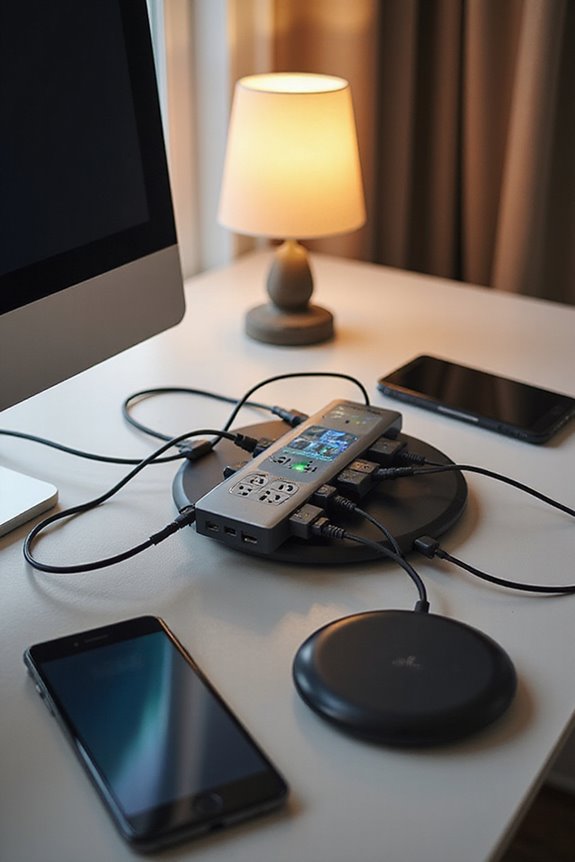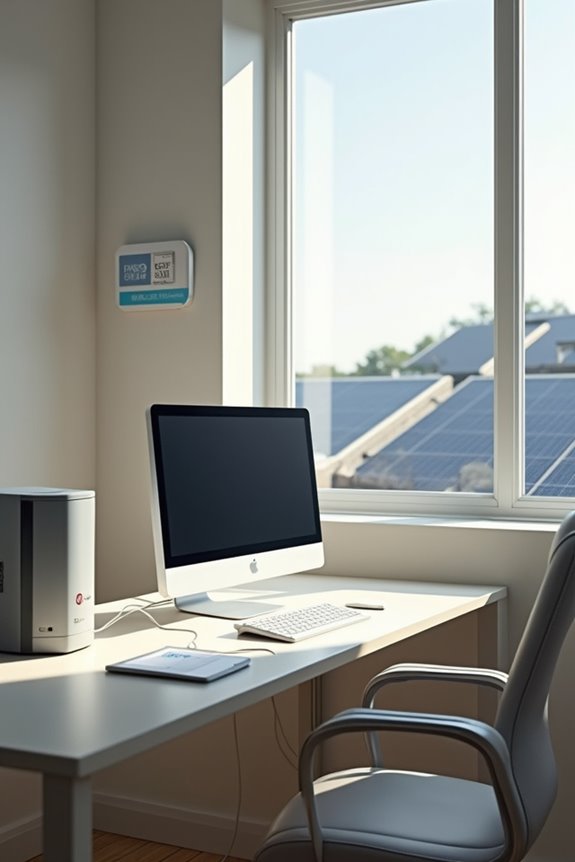To manage power for multiple devices, I recommend implementing Dynamic Power Management techniques, like Dynamic Voltage Scaling and Power Gating, to optimize energy use. Using intelligent Power Distribution Units allows for efficient monitoring and control of energy consumption. Additionally, configuring your operating system to optimize device power states and leveraging ACPI for power resource sharing can enhance efficiency. By monitoring device utilization patterns, you can identify areas for further improvement and discover more efficient practices for your setup.
Key Takeaways
- Utilize Power Distribution Units (PDUs) to centralize and effectively manage power supply for multiple devices.
- Implement Dynamic Power Management (DPM) techniques like Dynamic Voltage Scaling (DVS) to optimize power consumption based on workload.
- Use intelligent PDUs for real-time monitoring and control of energy usage across devices.
- Leverage Operating Systems’ device power management features to adjust power states and minimize energy use.
- Regularly assess and optimize power capacity needs to ensure efficient power distribution and prevent overloads.
Understanding Dynamic Power Management Techniques
While managing power for multiple devices may seem complex, dynamic power management (DPM) simplifies the process by adjusting power consumption according to workload and operating conditions. DPM employs various techniques, including dynamic voltage scaling and power gating, to optimize energy use effectively.
- Dynamic Voltage Scaling (DVS): This method adjusts the voltage and frequency based on the workload, considerably reducing power consumption during low-activity periods.
- Power Gating: This technique disconnects power from unused components, leading to substantial energy savings.
Power Distribution and Peripheral Control Strategies
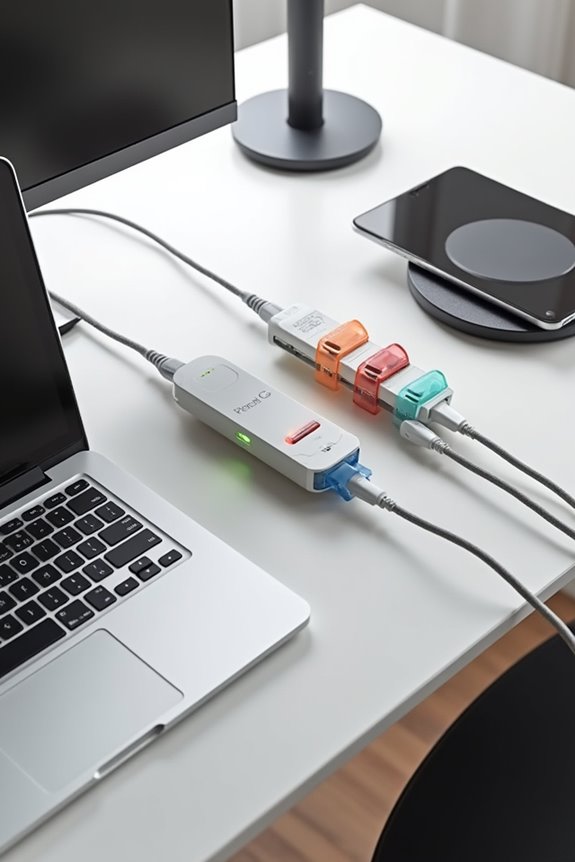
Power distribution and peripheral control strategies are essential components in managing energy efficiently across multiple devices. By utilizing a Power Distribution Unit (PDU), I can centralize my power supply and manage multiple outputs effectively. Intelligent PDUs offer monitoring and control features, which help me keep track of energy usage in real-time.
When setting up power distribution, I consider whether to use single-phase or three-phase systems. Three-phase systems deliver higher capacity and efficiency, making them ideal for larger setups. Additionally, implementing remote power panels allows for localized distribution, reducing cable clutter and enhancing safety. Furthermore, I ensure to incorporate surge protection ratings to safeguard my devices from voltage spikes.
Lastly, I prioritize load balancing and redundancy, ensuring my devices operate smoothly without overwhelming any circuits. Regular maintenance keeps everything running reliably.
Device Power Management in Operating Systems
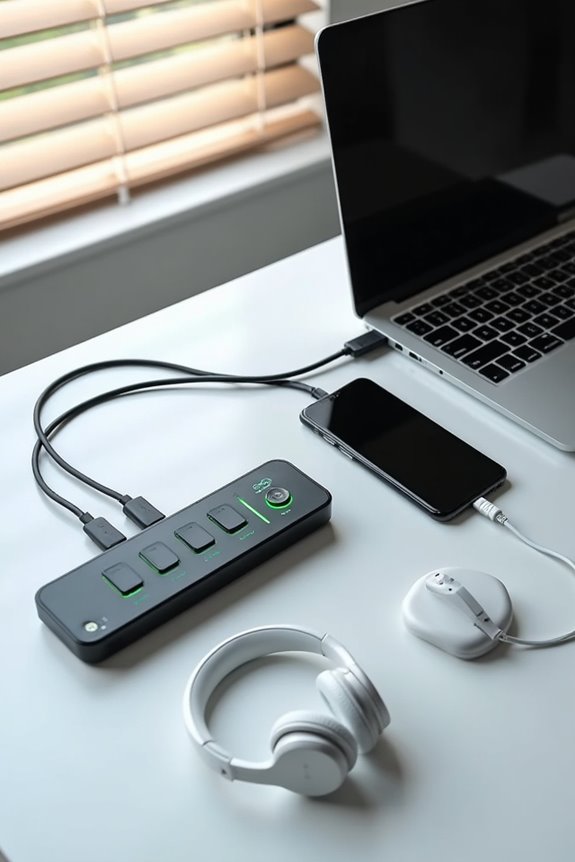
Managing the power consumption of devices within an operating system is a critical aspect of optimizing overall system efficiency. Device power optimization involves using both hardware and software techniques to minimize energy use. Operating systems play an essential role by adjusting device states, shifting them between various power states like D0 (active) and D3 (off).
For effective energy consumption analysis, it’s essential to monitor which components are idle and can be put to sleep. Techniques such as dynamic voltage and frequency scaling (DVFS) help reduce power while maintaining performance. Utilizing system-wide low-power states, like suspend-to-RAM, enables efficient management of multiple devices, ensuring they wake appropriately based on hardware events. This systematic approach leads to significant power savings while enhancing user experience.
Leveraging ACPI for Power Resource Sharing
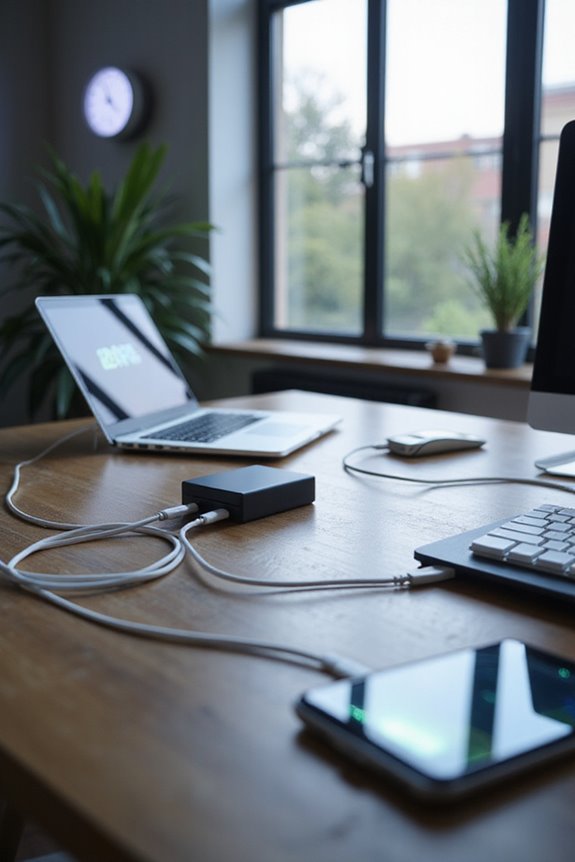
Leveraging ACPI for power resource sharing offers an effective strategy for optimizing device performance and energy efficiency. By utilizing ACPI benefits, we can manage power state shifts efficiently, allowing multiple devices to share resources without compromising functionality. This approach involves power state management, where devices can operate in various states, from active to low-power modes.
Resource multiplexing is essential, as it enables devices to coordinate their power needs, ensuring that shared resources are only active when necessary. Through firmware integration, we can implement these strategies effectively, ensuring that power resources are enabled or disabled based on device coordination. Overall, ACPI simplifies power resource sharing, making it easier to maintain energy efficiency across multiple devices while optimizing their performance.
Practical Strategies for Managing Multiple Device Power
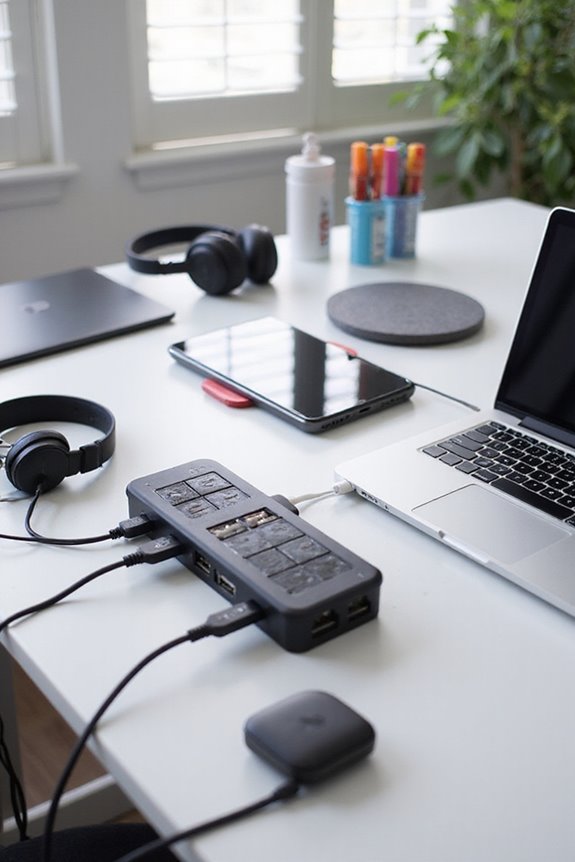
When we consider the complexities of operating multiple devices simultaneously, it’s vital to implement practical strategies that streamline power consumption across the board. One effective approach is utilizing Dynamic Voltage and Frequency Scaling (DVFS) for multi-device coordination, adjusting performance based on workload. Additionally, employing power gating techniques can disconnect power from inactive components, enhancing energy efficiency.
Real-time power optimization is essential for synchronized power management, allowing devices to adapt their power needs dynamically. Implementing low-power libraries and APIs can also aid in managing power across IoT devices. Finally, by adopting predictive power management models, we can anticipate device activity, ensuring that each device operates efficiently without wasting energy.
Hierarchical Power Control Implementation
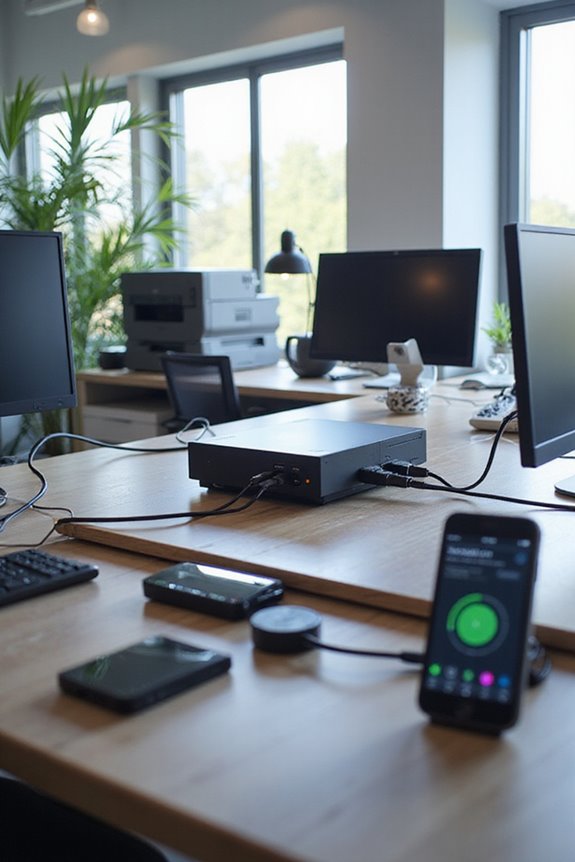
Hierarchical power control implementation represents a structured approach to managing energy across multiple devices, building on the practical strategies for power management previously discussed. By leveraging hierarchical architecture benefits, this method effectively divides responsibilities among different control levels, ensuring each layer operates autonomously while coordinating power distribution.
Utilizing dynamic voltage optimization, I can adjust voltage and frequency in real-time, enhancing energy efficiency. For example, the primary control layer directly manages device stability, while the secondary layer focuses on long-term distribution. The tertiary layer coordinates with external systems, providing a scalable solution for integrating numerous devices. This structured approach not only improves fault tolerance but also accommodates changes in power demand, ultimately ensuring a more efficient energy management system.
Communication Protocols for Peripheral Disabling
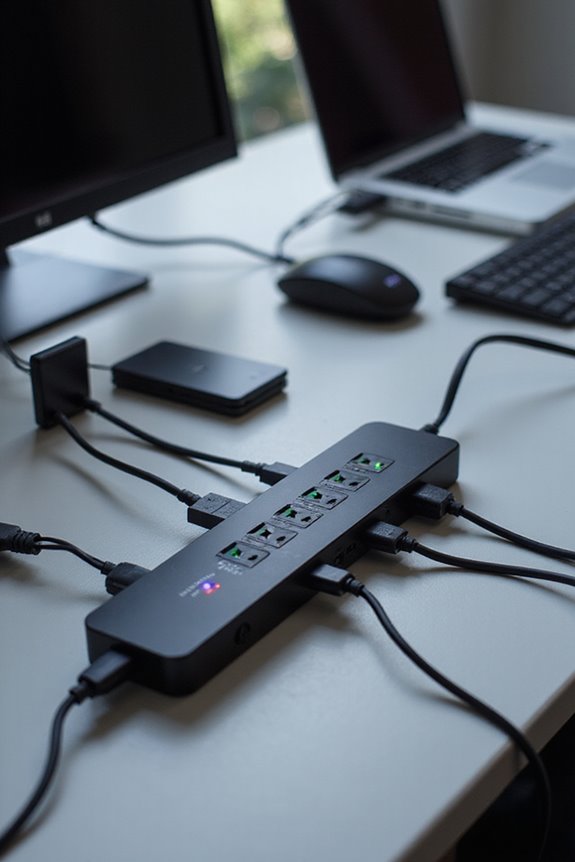
How do communication protocols impact the power management of peripheral devices? The choice of protocol is essential for achieving protocol efficiency and significant energy savings. For instance, I2C typically consumes less power than SPI due to its lower data transfer speed and simpler hardware setup. Utilizing techniques like packet scheduling can minimize overhead, allowing devices to enter low-power modes more effectively. Additionally, protocols that enable disabling radios or sensors through explicit commands help cut down on standby consumption. By aligning the right communication protocol with the device’s power requirements and operational context, we can optimize energy use and extend battery life, ensuring that peripherals function efficiently without unnecessary power drain.
Monitoring Device Utilization Patterns
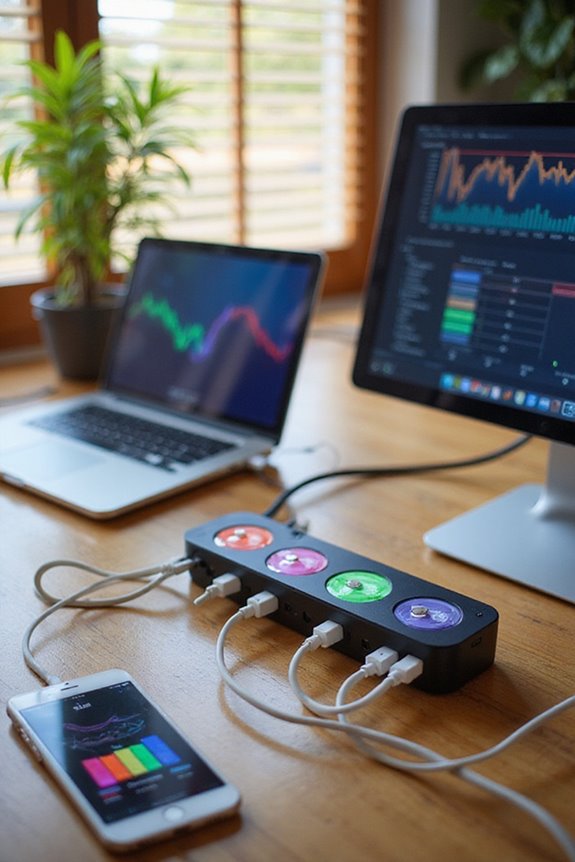
As the use of technology in healthcare continues to evolve, understanding device utilization patterns becomes vital for optimizing performance and improving patient outcomes. Monitoring tools, like the Device Utilization Summary report, provide insights into CPU, memory, and disk usage, which are essential for managing devices effectively.
The rise in wearable device trends, with usage increasing from 28% in 2019 to 36% in 2022, reflects a growing health awareness among consumers. Furthermore, remote monitoring benefits are significant, as nearly 50 million people in the U.S. currently use these devices. However, there’s a gap in data sharing, with only a quarter of users actively sharing their wearable data with healthcare providers, highlighting an opportunity for better utilization of this valuable information.
Technology and Tooling for Effective Power Management
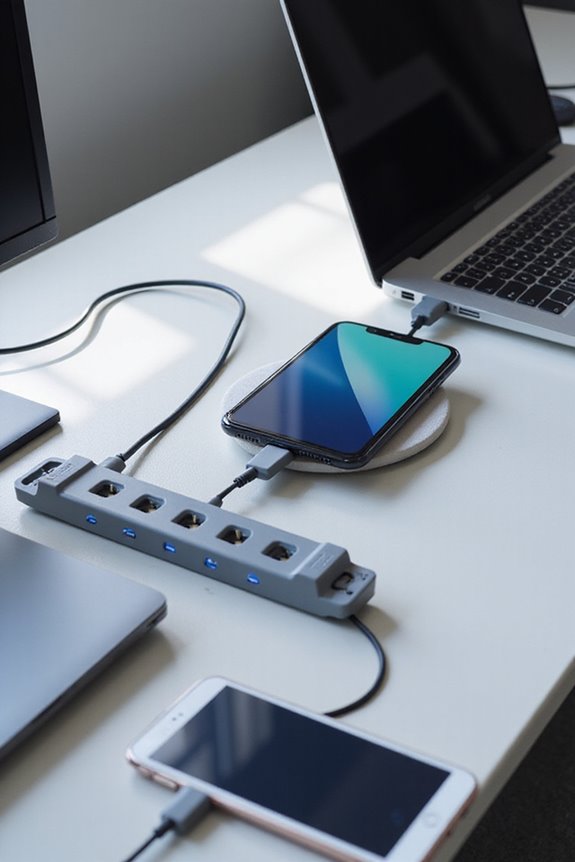
In the domain of healthcare technology, effective power management plays a pivotal role in ensuring the reliability and performance of various devices. Utilizing advanced tools like PowerMaster+ Management Software and the Phoenix Contact Power Management Suite allows for real-time monitoring and energy optimization. These solutions integrate seamlessly with cloud services, enabling remote management and analysis. Additionally, investing in a high-quality UPS system is essential for power capacity requirements, ensuring that devices remain operational during outages.
- Key Technologies:
- Uninterruptible Power Supplies (UPS) for continuous power.
- Energy-efficient power strips with surge protection.
- Scheduled shutdowns to prevent data loss.
- Alert systems for immediate notifications.
Future Trends in Device Power Management
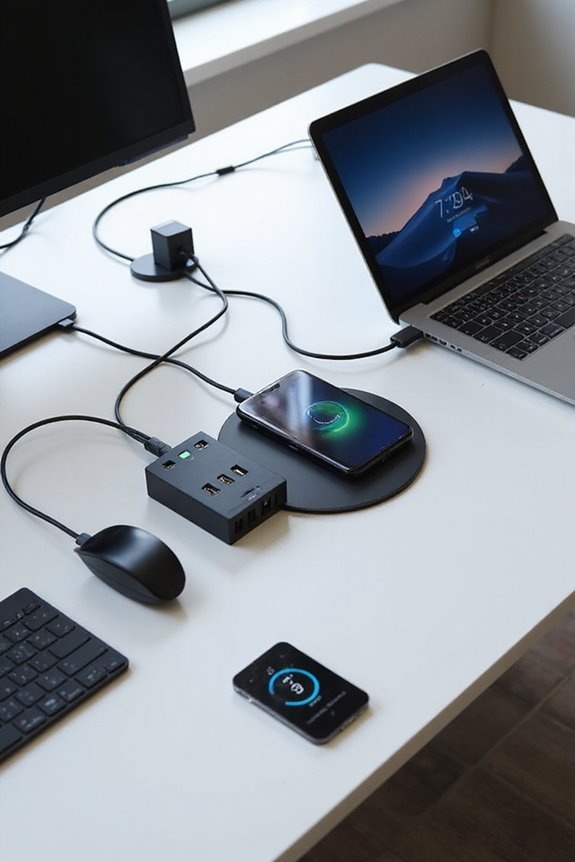
The landscape of device power management is evolving rapidly, driven by advancements in technology and the increasing demand for energy efficiency. Innovations like gallium nitride (GaN) and silicon carbide (SiC) are enhancing power density, making it possible to integrate more power into smaller devices. The rise of smart grid technology is enabling better renewable integration, optimizing energy distribution. Additionally, advanced packaging techniques reduce power consumption while improving performance. AI optimization and predictive analytics are becoming essential as they allow for real-time adjustments in energy usage, enhancing reliability. These trends, along with a focus on sustainable practices, are shaping the future of power management, ensuring that devices are not only efficient but also environmentally friendly.
Frequently Asked Questions
What Are the Benefits of Power Management in Embedded Systems?
Power management in embedded systems boosts energy efficiency and resource optimization. It extends battery life, enhances thermal performance, supports sustainability, and guarantees peak performance, making devices more reliable while reducing costs and environmental impact.
How Do Environmental Factors Affect Device Power Consumption?
I’ve noticed that device temperature and network conditions greatly impact power consumption. When temperatures rise, devices often work harder, while poor network conditions can lead to increased energy use, highlighting the need for efficient management practices.
What Tools Can Help Visualize Power Consumption Data?
When I immerse myself in power analytics, it feels like discovering a treasure chest of insights! Consumption dashboards reveal inefficiencies, allowing me to visualize data trends and make smarter energy decisions. It’s a game changer!
How Can Firmware Updates Impact Power Management Strategies?
Firmware updates markedly impact power management strategies. I’ve noticed that firmware optimization improves power efficiency, reducing consumption and enhancing stability. Regular updates not only fix bugs but also strengthen overall power management in my devices.
What Role Do User Settings Play in Device Power Efficiency?
Think of your device as a garden; user preferences and device settings shape its growth. I’ve found that adjusting brightness, sleep timers, and energy modes can greatly boost power efficiency, keeping my tech blooming longer.

